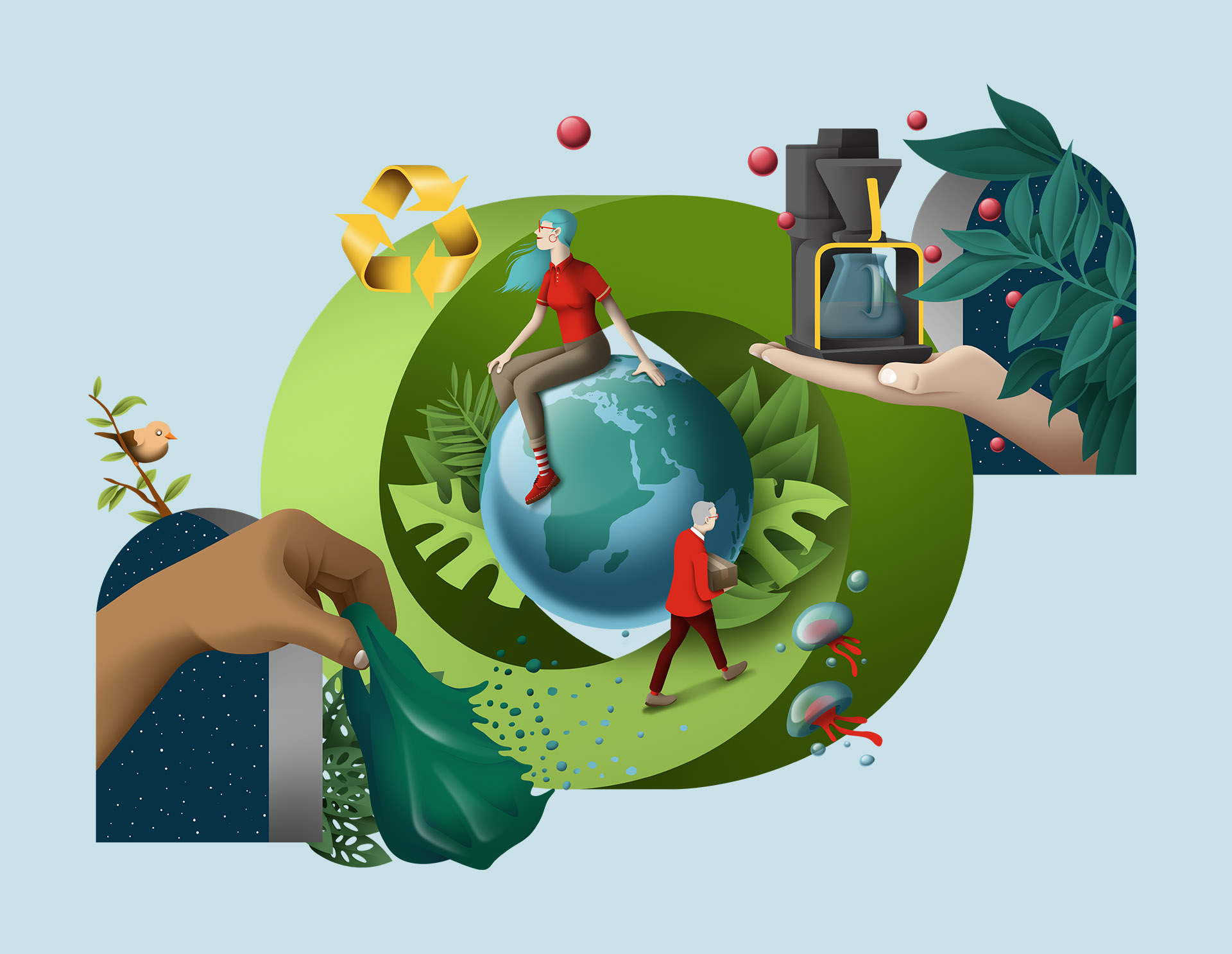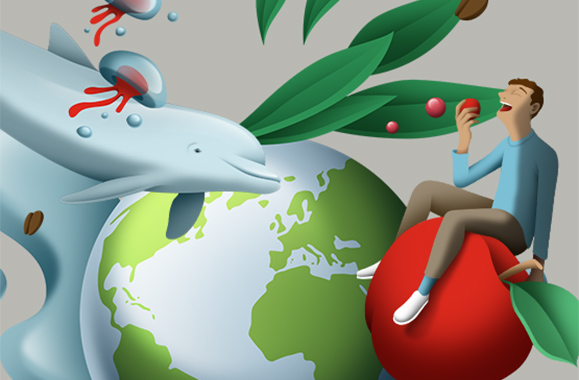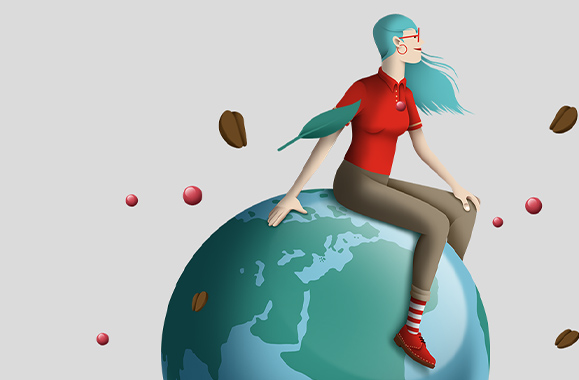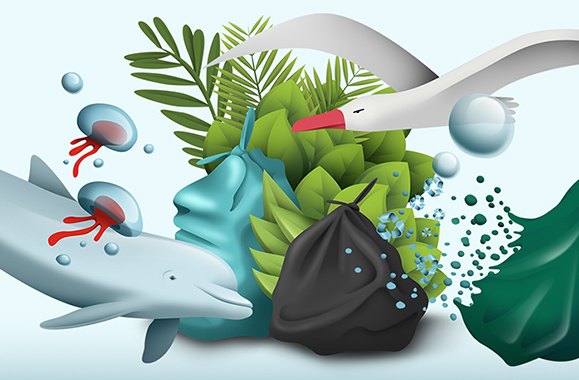Resources
PDF DownloadA circular economy can help drastically reduce the need for new resources. What would it take to keep resources in a long-lasting cycle? Carlo Bertolino, Prof. Dr. André Reichel, and Ashutosh Singh discuss the challenge.

Carlo Bertolino Unfortunately, we are still a long way from achieving a circular economy. However, it has to be said that much progress has been made over the past 15 years – most notably in switching products to reusable materials and setting up recycling systems. We have also made huge strides with regard to the recyclability of products as a result of new technologies and changed materials – especially in the field of plastics. Many products are now made entirely or to a very large extent from recycled post-consumer materials. Of course, all this is still not enough. But important steps have been taken in our efforts to move away from a throw-away society.
Another encouraging sign is that companies have been cooperating and exchanging ideas much more frequently for a number of years now. After all, this is an important prerequisite for a circular economy. Materials, machines, and equipment as well as systems and infrastructures have to be coordinated with each other. Intensive cooperation, as well as research, is urgently needed in this field.
I think we could make much faster progress if governments not only played a more active role in creating a sustainable economic system, but also in encouraging consumers to behave accordingly. At Cuki Cofresco, for example, we often find that although product recycling is possible, it still does not happen – and this is due to a lack of awareness or knowledge in the population. However, a circular economy can only work if all stakeholders participate. This is why I think educating and training everyone involved is crucial to the success of a circular economy.

Prof. Dr. André Reichel In order to actually achieve a circular economy, we need to simulate natural ecosystems in which there are virtually no waste products. This is a gigantic challenge – not least because we will initially need a huge amount of energy to achieve this goal, and a circular economy will profoundly change all our economic exchange processes. Recycling is an important step in this process, but still not enough. In the future, the focus will be much more on remanufacturing, on the technological improvement of existing products, on their reparability, on the extension of their life cycle, and on their reuse or transfer. In other words, we need to look at the circular economy from a much broader perspective and consider all the options in order to genuinely reduce our material footprint.
Another decisive factor will be how quickly and to what extent products manufactured in this way will be accepted by consumers. Although there is already a strong commitment to sustainability, we are not yet seeing a run on sustainably manufactured products – for reasons of convenience or price, or simply out of ignorance. But if demand does not provide the right incentive or pressure, the transformation process will take longer than necessary.
Only legislation can solve this dilemma. A good example of this is the introduction of waste separation in Germany some 30 years ago: it was imposed by the local authorities and not really understood by the population for a long time. Today, it almost physically hurts many Germans if they cannot put their waste in the right garbage can. Habits are not easy to change, and awareness campaigns only work to a certain extent. We can therefore expect to see numerous legislative initiatives around the globe in the coming years, otherwise we will fail to achieve the sustainability goals in the desired time.

Ashutosh Singh The way a country deals with resources depends to a large extent on the prosperity, culture, and education of its population. Economic hardship generally leads to resources being valued more highly, while a low level of education tends to hinder the establishment of circular economy systems or even the separation of waste. As a result, the circular economy principle is likely to spread at different speeds in different regions of the world.
Another challenge is that it is not only habits that have to be tackled, but also prejudices and attitudes. For example, many people believe that all plastics are unsustainable. But this is nonsense. Plastics can be far more sustainable than glass, paper, or other materials that many people regard as highly sustainable.
In our efforts to achieve a resourceefficient economy, I believe that measuring and reporting on our ecological footprint is a very important lever. Only if we succeed in compiling and evaluating accurate information on energy consumption and emissions, as well as on other sustainability aspects, can we obtain the data we need to make better use of resources – and also to expand our knowledge and drive forward the appropriate technologies and processes. We have already made good progress in recent years with the measurement of CO2 emissions – particularly with regard to Scope 1 and Scope 2. We must now continue to expand and refine our key performance indicator systems one step at a time.
Carlo Bertolino is Chief Marketing Officer and responsible for sustainability issues at Cuki Cofresco. / Prof. Dr. André Reichel is Professor of International Management & Sustainability at the International School of Management (ISM) in Stuttgart and one of the leading thinkers on business perspectives in the post-growth economy. / Ashutosh Singh is Country Manager of Vishuddh Recycle Private Limited, a social business company which is majority-owned by Cofresco.








